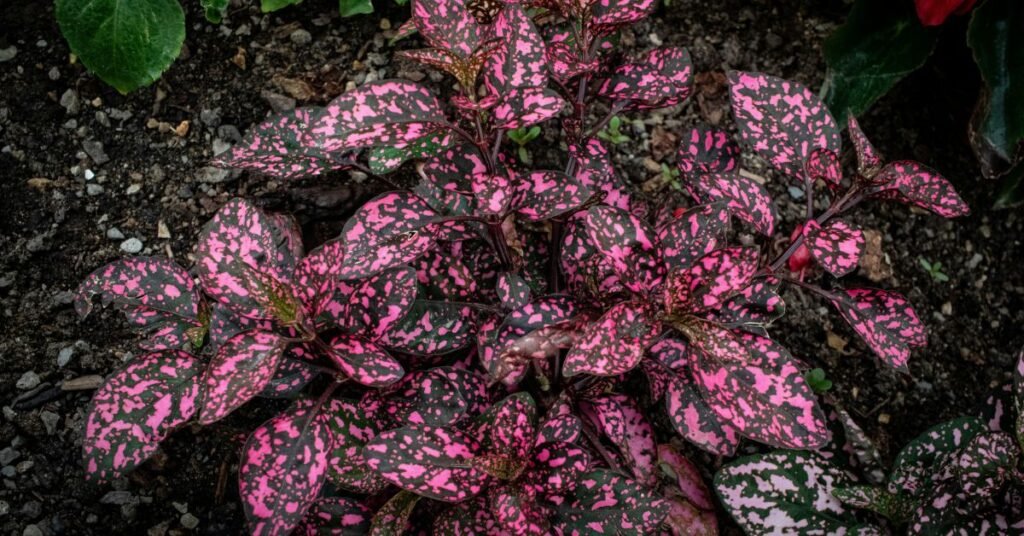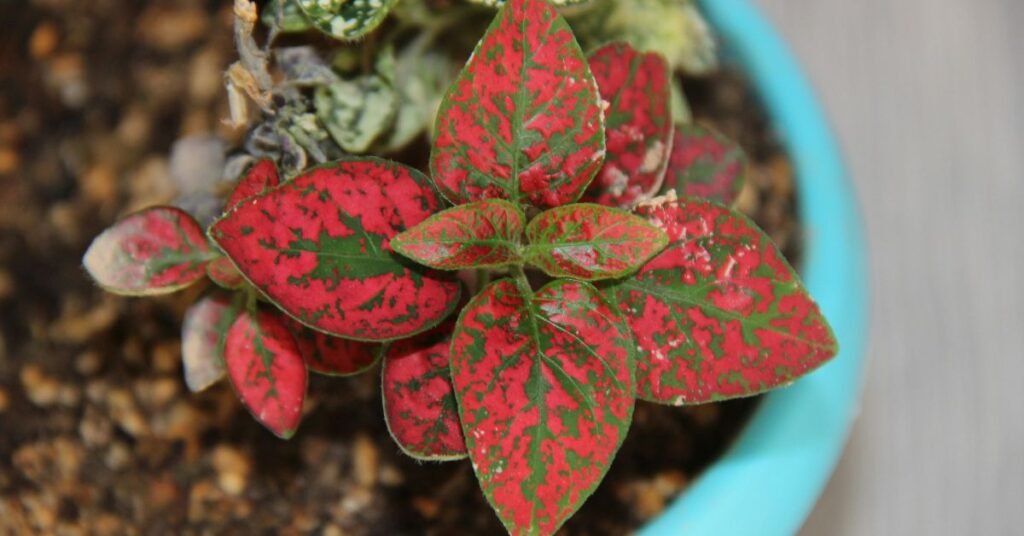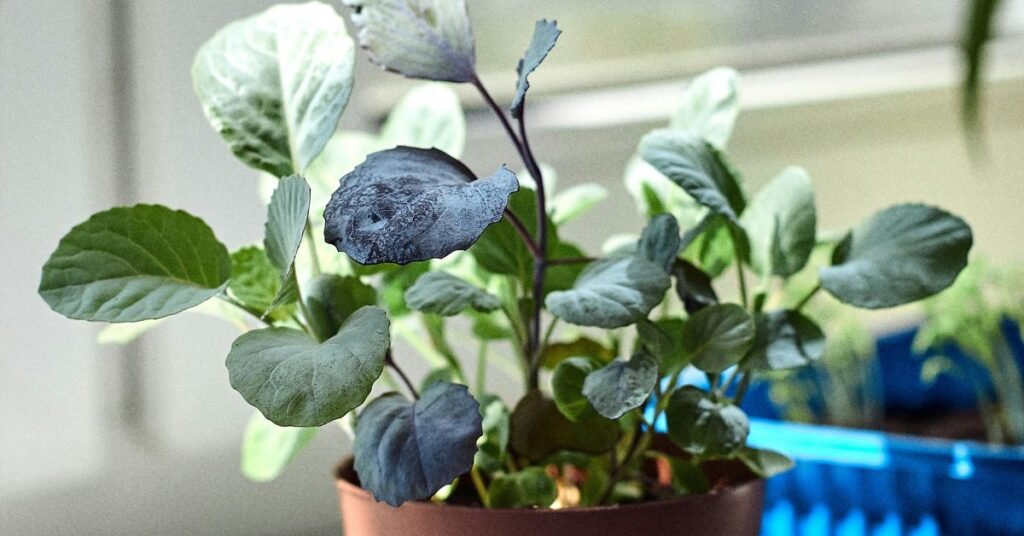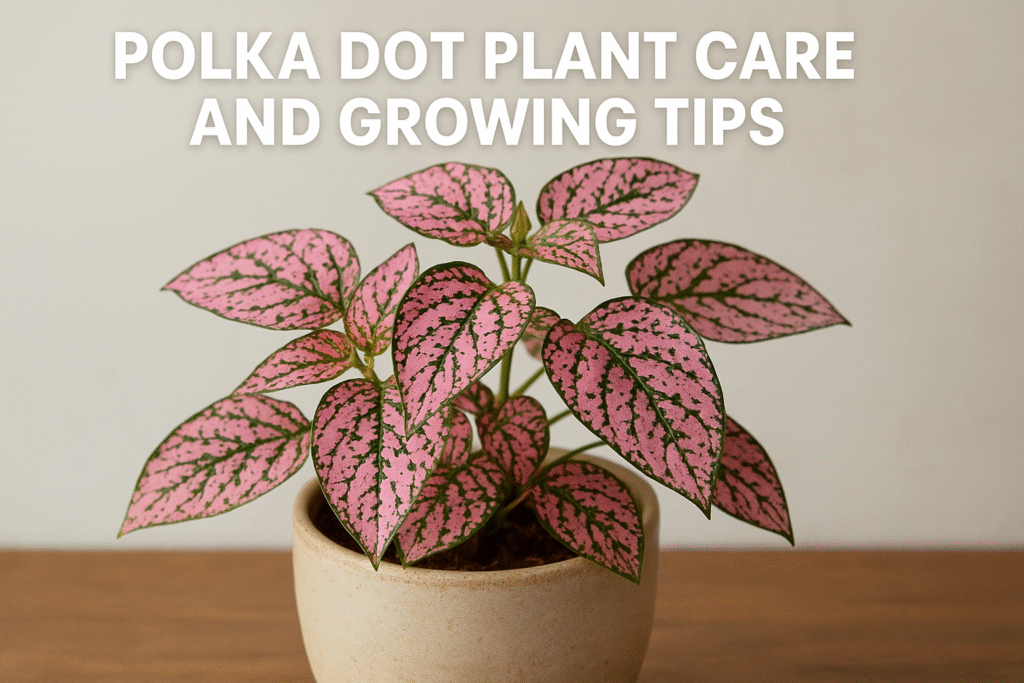The Polka Dot Plant, scientifically known as Hypoestes phyllostachya, is a vibrant and eye-catching houseplant famous for its colorful spotted leaves. Native to Madagascar, this tropical beauty brings a playful pop of pink, red, or white to any indoor garden. Its compact size and easy-care nature make it a favorite among both beginners and seasoned plant enthusiasts.
Overview of the Polka Dot Plant
The Polka Dot Plant stands out due to its striking foliage patterns. The leaves are green with brightly colored spots that resemble paint splashes—giving this plant its name. It grows up to 10–18 inches tall and thrives in warm, humid environments.
Common Names: Freckle Face Plant, Measles Plant
Scientific Name: Hypoestes phyllostachya
Family: Acanthaceae
Native Region: Madagascar
Plant Type: Tropical perennial (often grown as an annual indoors)

Ideal Growing Conditions
Light Requirements
The Polka Dot Plant loves bright, indirect sunlight. Too little light causes the colors to fade, while too much direct sun can scorch the delicate leaves.
Best placement: Near an east-facing window or filtered south light.
Temperature and Humidity
Keep temperatures between 18°C–27°C (65°F–80°F). Avoid cold drafts and sudden temperature drops.
High humidity keeps the plant lush — around 50–60% is ideal. You can mist regularly or place a humidifier nearby.
Soil Preferences
Use a well-draining, rich potting mix. A blend of peat moss, perlite, and compost works best. The soil should remain moist but never soggy.
Watering Schedule
Watering the Polka Dot Plant requires balance. Keep the soil consistently moist, but allow the top inch to dry before watering again.
Overwatering leads to root rot, while underwatering causes leaf curling and fading color. Always ensure the pot has good drainage.
Tip: In winter, reduce watering slightly since the plant’s growth slows down.
Fertilizing for Healthy Growth
Feed your Polka Dot Plant every 2–3 weeks during the growing season (spring and summer) with a balanced liquid fertilizer (10-10-10) diluted to half strength.
Stop fertilizing in fall and winter to avoid nutrient burn.
Pruning and Maintenance
Regular pruning encourages bushier growth and prevents legginess.
- Pinch back the growing tips once the plant reaches 6 inches.
- Remove faded leaves to promote healthy new growth.
- If the plant flowers, trim off the blooms — flowering can cause it to become leggy.
Fun Fact: The Polka Dot Plant’s flowers are small and purple but not very showy — it’s grown mainly for its vibrant foliage.
Propagation Methods

Stem Cuttings
The easiest way to propagate Polka Dot Plants is through stem cuttings:
- Cut a 4–6 inch stem below a leaf node.
- Remove lower leaves.
- Place the cutting in water or moist soil.
- Roots appear in about 1–2 weeks.
- Transplant into a small pot once rooted.
Seed Propagation
You can also grow from seeds by sowing them on the soil surface and keeping them moist in warm temperatures. Germination takes 10–14 days.
Common Problems and Solutions
Fading Colors
If leaf colors fade, it’s likely due to low light. Move the plant to a brighter spot.
Drooping Leaves
This usually indicates underwatering or too much heat. Water promptly and maintain consistent humidity.
Brown Leaf Tips
Caused by dry air or excess fertilizer. Mist the plant more often and flush the soil every few months.
Pests
Watch for aphids, whiteflies, and spider mites. Wipe leaves with neem oil or mild insecticidal soap weekly until pests are gone.
Indoor vs. Outdoor Growth
- Indoors: Ideal for desks, shelves, and windowsills where indirect light is available.
- Outdoors: In warm climates, it can be grown as a bedding plant or ground cover in shaded gardens.
Avoid harsh midday sunlight outdoors — partial shade is best.

Repotting Tips
Repot every 1–2 years or when roots start poking through the drainage holes. Choose a pot one size larger with fresh, nutrient-rich soil. Spring is the best time for repotting.
Benefits of the Polka Dot Plant
- Improves indoor air quality
- Adds cheerful color to dull corners
- Compact and pet-safe (non-toxic to cats and dogs)
- Great for terrariums and dish gardens
Seasonal Care Tips
| Season | Care Focus |
|---|---|
| Spring | Start fertilizing and pruning. Repot if needed. |
| Summer | Maintain moisture and humidity. Avoid harsh sun. |
| Autumn | Reduce watering, trim leggy growth. |
| Winter | Keep warm and avoid cold drafts. Mist regularly. |
Frequently Asked Questions (FAQ)
Why is my Polka Dot Plant losing its color?
It may not be getting enough light. Move it closer to an indirect light source.
Can I grow Polka Dot Plant in water permanently?
Not recommended — water propagation is temporary; transfer to soil for long-term health.
How long does the Polka Dot Plant live?
Typically 1–2 years, but regular pruning and propagation can extend its lifespan indefinitely.
Final Thoughts
The Polka Dot Plant is more than just a pretty leaf — it’s a symbol of color, life, and vibrancy. With the right balance of light, moisture, and love, this playful plant will brighten any indoor garden. Whether in pots, terrariums, or hanging baskets, it’s one of the easiest tropical plants to maintain.

